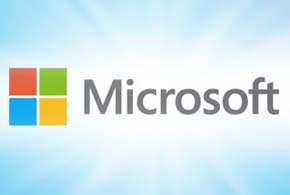Office 365 Groups, a collaboration-enhancing service offered by Microsoft, now includes new features intended to help corporate IT administrators, lawyers and compliance officers see eye-to-eye.
Christophe Fiessinger, senior product manager for Microsoft Office 365, announced on Dec. 9 that the software maker has added e-discovery support to Office 365 Groups. “You can now perform an eDiscovery and litigation hold on a group’s mailbox using Exchange Admin Center and on group files using the Office 365 Compliance Center,” he stated.
In addition to identifying content pertaining to an investigation or lawsuit, the update also brings better visibility into the goings-on of an Office 365 Group. “The Azure Management Portal now exposes group management events (creation, updates, membership changes, etc.) in the group audit report,” explained Fiessinger.
“Soon, these same events will appear in the Office 365 Compliance Center alongside other Office 365 events you’re used to tracking,” he added. “This will give you a complete picture of the Groups changes in your tenant over time.”
New, more flexible group membership management options help businesses automatically configure their groups as personnel moves between departments or projects.
Dynamics Membership controls (Azure Active Directory Premium required) enable administrators to “create groups with rule-based memberships using the Azure Management Portal,” Fiessinger said. “Group membership is updated within a minute as users’ properties change. This allows easy management of larger groups or the creation of groups that always reflect the organization’s structure.”
Group naming policies now extend to group email addresses, further streamlining setup activities and preventing clashes over email address names. “Now a naming policy also applies to the email alias created for groups. For example, if a group naming policy would cause a group created with the name ‘(North America) Marketing,’ the group’s email address would be ‘northamericamarketing@contoso.com,'” explained Fiessinger.
More management, compliance and features are in the works, including multi-domain support for enterprises that use multiple email domains.
On the reporting front, Fiessinger said the company is working on making it “possible for admins to access metrics on usage and engagement for groups in their tenant from within the Office 365 Admin Center.” Also planned are controls that allow administrators to manage Office 365 Group shared storage with more granularity.
Soon, organizations will also have the ability to hide an Office 365 Group’s roster from non-members. “This is especially useful in schools where class rosters can’t be exposed to other students or faculty in the school,” Fiessinger said.
Finally, Microsoft wants to make it easier for businesses with hybrid-cloud implementations of the company’s productivity software to use the full range of Office 365 Groups functionality.
“The goal for our hybrid support is to ensure that users with mailboxes hosted on-premises are able to participate fully in group conversations and have access to group assets like files, notes and plans that are stored in the cloud,” stated Fiessinger. “This requires that Azure AD Connect is configured and syncing groups to your on-premises directory. Additional guidance on configuring Exchange for optimal mail flow to groups from on-premises is on the way.”
